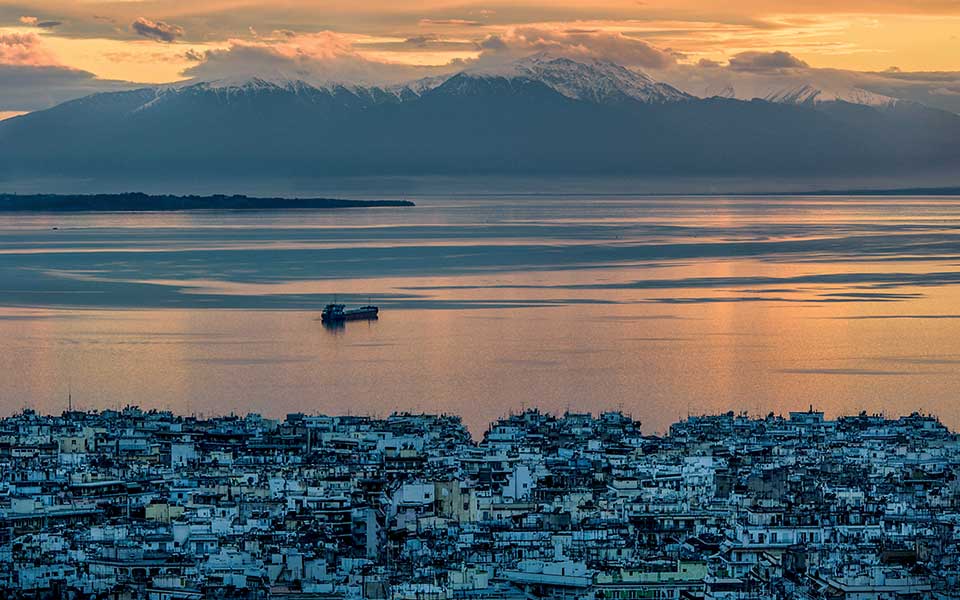SAME AS IT EVER WAS
By Simon Bensasson, former President of the Municipal Council
Returning after a 38-year absence, I’m confronted with a view of the city marred by nostalgia. I find myself focusing on what is no longer here, and blind to what is.
Until one day, along the old seafront, just before sunrise, I look west out at the blackness of the sea and at a dark sky turning gray. The sea and sky are indistinguishable, with no visible horizon, creating the impression that the freighters and boats anchored in the gulf are levitating, until the first rays of light shine from behind, revealing the snowy peaks of Mt Olympus.
It’s a moment of sheer magic, and suddenly it’s the same as it’s always been.
Imagine seeing your city for the first time, all over again. You stare in awe at the architectural styles of the façades on Aristotelous Square and at the proportions of the great square itself. You turn left onto Tsimiski Street and, in the morning light, you spot shop assistants hurrying to work or nibbling on a koulouri, the ring-shaped sesame bread that is the local breakfast staple.
You turn right onto Venizelou Street and realize that all the elegant buildings on the left are exactly as you remembered them. Then it’s a right onto Ermou, and left onto Kapani, bringing you to a marketplace full of little shops and covered arcades. The place is full of butchers, fishmongers, fruit and vegetable sellers, but it’s also full of smells and sounds.
You can hear the voice of the throng and the cries of the sellers at their stalls praising the quality of their products. There are people browsing, buying and arguing; it’s the same as it always was, only richer and livelier.
You love this city. It’s beautiful. It hasn’t really changed; it’s just developed and progressed, as cities do.
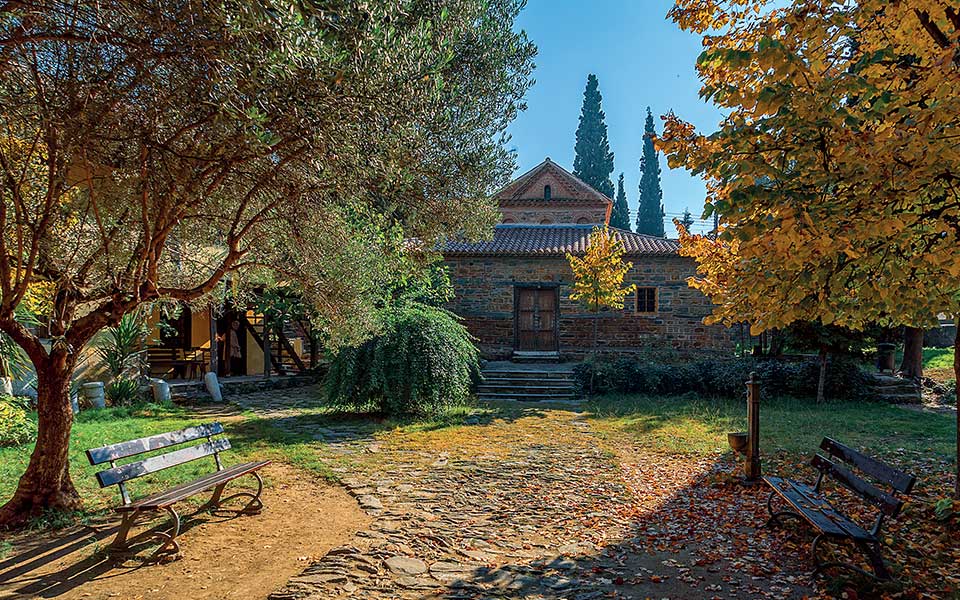
© Perikles Merakos
IN A QUIET PLACE
By Morfo Papanikolaou, Architect / SPARCH
I perceive Thessaloniki as being something uniform and solid, and yet I also experience it as though it were several cities at once. Anarchic and charming, chaotic and resilient, fragile and robust, it’s a living city blessed with infinite dynamism.
I think, for instance, of the northwestern section of the city walls and of the Tower of Trigonio. In close-up, it’s a sturdy fortress built of stone, bricks and fragments of marble repurposed as spolia. In the distance, between the city and Mt Olympus, is a pool of seawater that calls me to its side. I start my descent.
From the Upper City, I move down towards the sea, slipping between houses and gardens, steps and people.
I make a stop at the Church of Aghios Nikolaos Orfanos, a modest monastery church with wall paintings that will take your breath away. What’s more, the monument’s beauty isn’t confined to its interior. Its exterior, the courtyard, will startle you with its simplicity, a space of olive trees, cypresses, scents and a dense silence that will redeem you. This is an introverted oasis where an awareness of time vanishes, replaced by a tranquility that will enable you to look deeper inside yourself.
Further down, on Kassandrou Street, the noise and the ugliness will wound you. I slink inside yet another enchanting microcosm at the Alaca Imaret. What was once a mosque, a poorhouse and a religious school is today a magical space for travelers and visitors. Outside, children play among the marble columns that support the colonnade’s arches and domes.
I continue further down until I reach the Rotunda. The exterior, with its various architectural elements, its modest garden and its fountain, is a prelude to the transcendence that will follow as the interior transports you. There’s magic in the tension of the empty space, the austere geometry, the authenticity of the materials, the spell cast by the mosaics and the light that searches for old and new faiths and rituals.
I walk on, down to the sea.
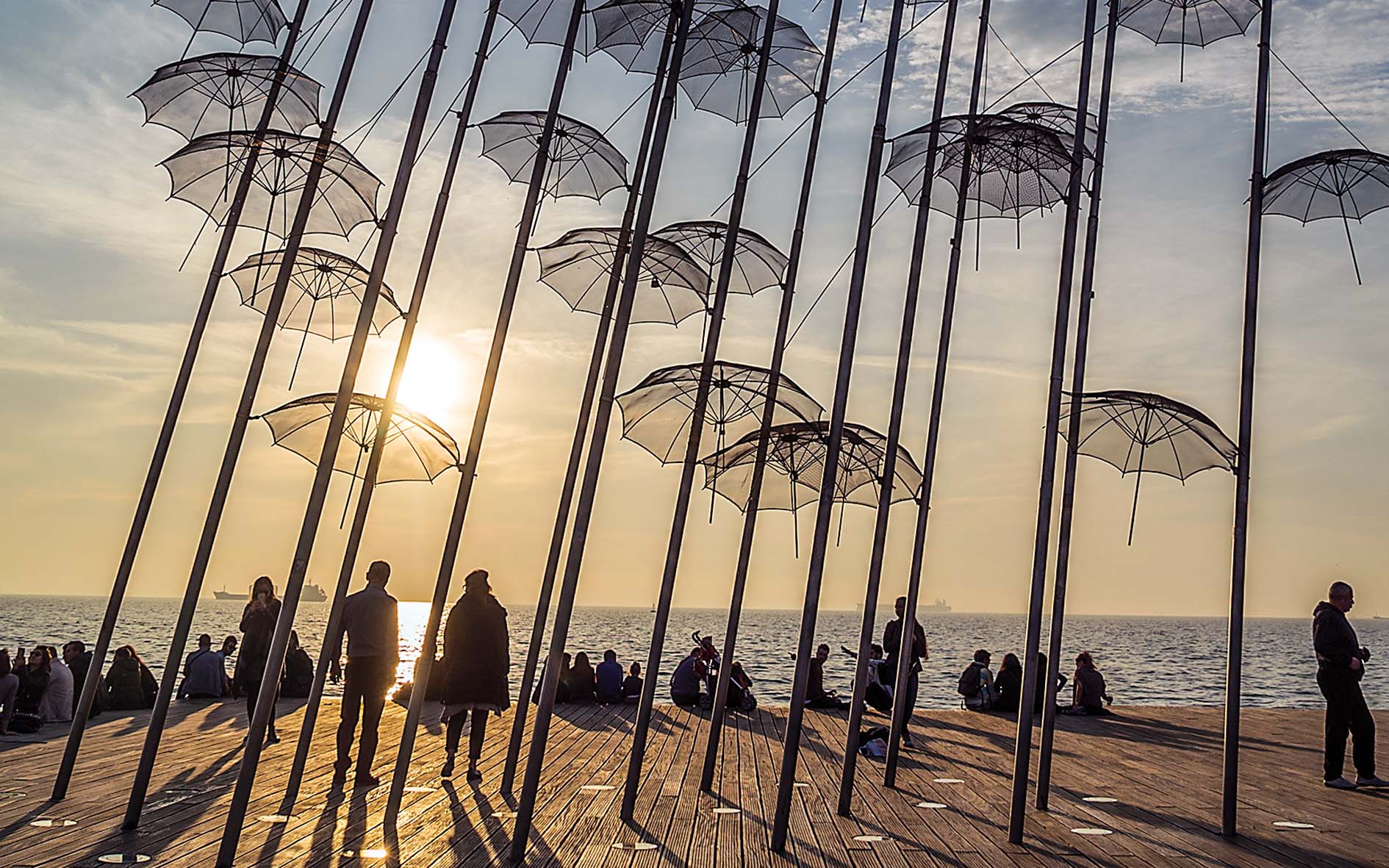
© Perikles Merakos
the other one
By Thouli Misirloglou, Art Historian
For me, Thessaloniki is the open-air cinemas – such as the Apollo, the Natalie and the Alex. It’s the seafront – that timeless breath of life that is also the place from where the city looks out towards the world.
It is the monuments of unparalleled beauty, such as the Rotunda, the Church of Aghios Nikolaos Orfanos, the Vlatadon Monastery, which seem to transmit their undisturbed serenity in unceasing waves.
It’s also the George Zongolopoulos sculpture at the north entrance of the exhibition grounds of the Thessaloniki International Fair, even if this piece is in complete contrast to “Umbrellas,” another sculpture by the same artist, which has become the city’s trademark artwork.
The piece, “Cor-ten,” an almost cubist-constructivist sculpture, was installed here in 1966 in order to symbolize production growth and a progressive Greek economy. Diverging from so many of the sculptures created during the same period, such as the statue of Alexander the Great by the sculptor Vangelis Moustakas, its presence was a daring mark of tolerance towards what was different.
Today, this sculpture seems to suffer in comparison with the more popular “Umbrellas,” which this romantically minded city loves, especially when that work is framed by beautiful sunsets. In my eyes, however, it remains striking, one of the few modernist monuments that Thessaloniki still has.

© Stefanos Tsakiris
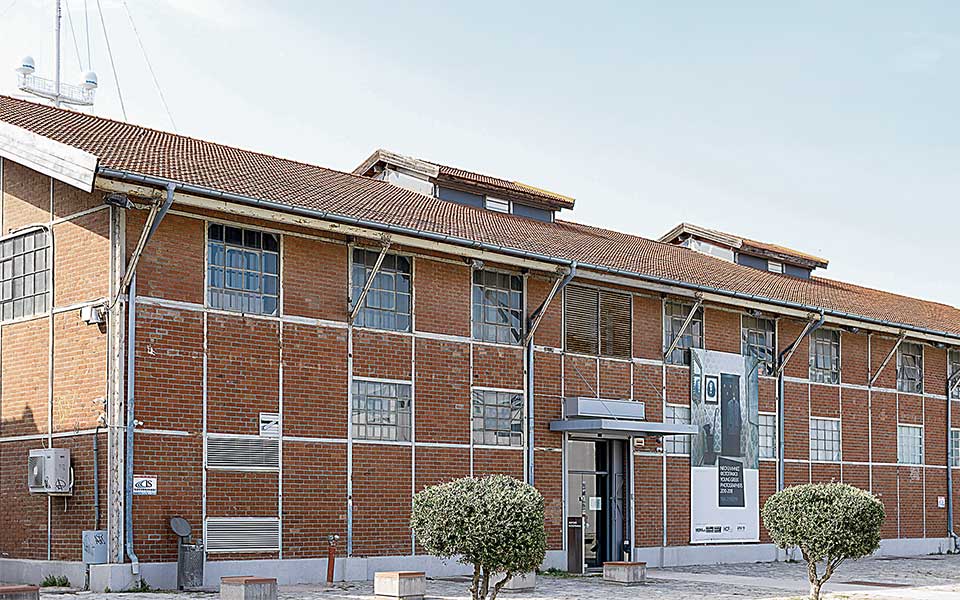
© Stefanos Tsakiris
A UNIQUE COLLECTION
By Maria Tsantsanoglou, Director of MOMus
My strolls through the city are nearly always linked with the museums that make up the innovative platform known as the Metropolitan Organization of Museums for the Fine Arts of Thessaloniki – or MOMus. Its five spaces, scattered across the city, are home to rich collections comprising modernist art works from the Russian avant-garde, and works of contemporary art and photography, as well as experimental and innovative projects.
The collections are part of Thessaloniki’s contemporary cultural profile, while the buildings that house them reflect the city’s architectural diversity: the modern building of the Museum of Contemporary Art; the harbor warehouses that house the Museum of Photography and the Center for Experimental Arts and which are legacies of the city’s early 20th-century industrial boom; and the Moni Lazariston, which was built in 1886 by French monks from the Church of St Lazare in Paris and today is home to the Museum of Modern Art.
My route towards the latter, in the western district of Stavroupoli, often passes through the WWII Allied cemeteries and the housing projects along Langada Street, affording me a glimpse of a less touristy part of the city.
The complex, a one-time monastery which sits in the midst of the modern urban landscape, has been a boon to the western neighborhoods, attracting museum-goers eager to see the Costakis collection, a unique assemblage of 1277 works from the Russian avant-garde.
There’s also a substantial archive that helps us study this experimental art movement that flourished in Russia at the beginning of the 20th century. Important works by Kazimir Malevich, Vladimir Tatlin, Lyubov Popova, Aleksandr Rodchenko, Gustav Klutsis and other artists bear witness to one of the most staggeringly creative periods in the history of world art.
The collection, which was acquired piece by piece in Moscow by the Greek collector George Costakis, who subsequently transported it back to his native land, is a true gem. If you don’t take the opportunity to see it while you’re in the city, you’re missing something special.
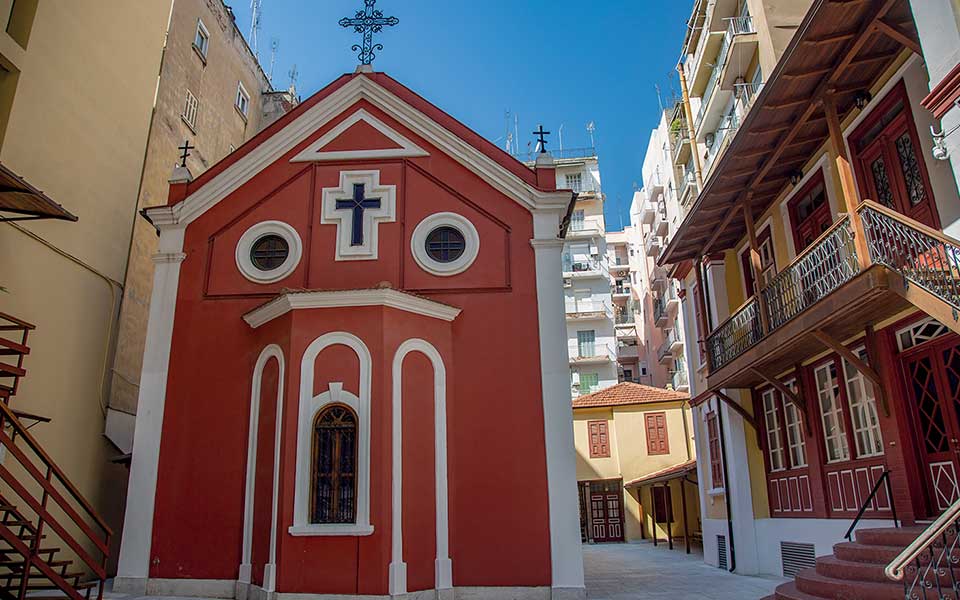
© Nicolas Economou
SACRED PLACES
By Anastasis Douros, Director of the Mt Athos Center of Thessaloniki
I love the city center’s narrow streets. They’re full of unexpected architectural treasures, revealing the city’s living history while still hiding countless secrets.
One such stretch of road is Patriarchou Ioakim, a side street that connects the city’s three most important monuments. The street starts behind the Church of Aghia Sophia, crosses Egnatia Avenue, meets up with the beautiful Byzantine Church of Aghios Panteleimon, and concludes at the majestic Rotunda.
The wider area was once home to the subsidiary establishments of the monasteries of Mt Athos, the points for all communication between that monastic community and the outside world. Development has effaced most of their traces, but there’s still a church here that’s linked to the Monastery of Simonos Petra. It stands in the narrow lane of Exadactylos, ringed by apartment blocks, an oasis in the heart of the modern city.
The Church of Aghios Charalambos, built in 1905 on the site of a older church, and the adjacent landmark building in the same enclosed courtyard bring the atmosphere of monastic life to secular Thessaloniki.
Nearby on Egnatia Avenue, the Nedelkos Mansion rises majestically; for two decades, it has housed the Mt Athos Center. It operates as the central “succursal” entity, or subsidiary establishment, of Mt Athos, and as a venue for exhibitions and conferences that reinforce the centuries-long bond between Thessaloniki and the Monastic Community of Mt Athos.
It’s this neighborhood that constitutes my very own Thessaloniki.

